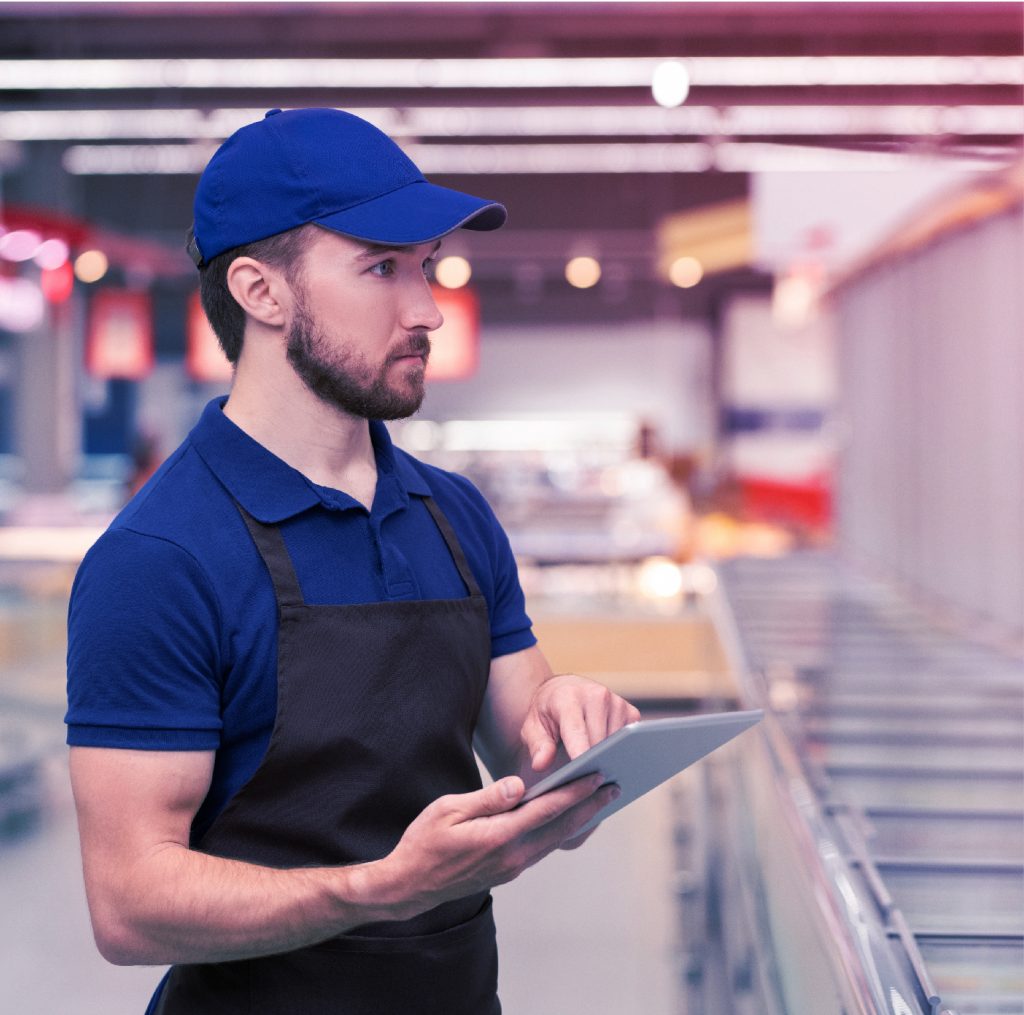How AI Can Help Third-Party Retail Execution Teams

Have you ever asked a retail store employee where to find something on the shelf only to be politely answered that the employee is actually not an employee of the store but works for the company that makes your favorite brand of potato chips? If so, you were probably talking with a member of a third-party retail execution team, a group of professionals hired by manufacturers. To get products from the manufacturer to your home, they manage and execute several in-store activities, including merchandising, product placement, store resets, and promotional displays. And they have enormously difficult jobs requiring manual and labor-intensive processes with lots of inefficiencies leading to long in-store shelf execution time, low upsell recommendations, and human errors in planogram compliance. But AI can help them get better. Let’s take a closer look at how.
The Life of a Third-Party Retail Execution Worker
Meet Robert. He’s third-party retail execution worker:

Robert lives a demanding life. His job involves a significant amount of travel. He may need to visit multiple stores within a given region or territory on any given day. He needs to eat his Wheaties, too, because his duties can be physically demanding. He unpacks and stocks different products on the shelf and sets up displays frequently. He works in different environments and weather conditions. He is almost always on his feet.
Oh, and there’s something else: Robert is expected to manage several tasks rapidly – in fact, I estimate within four minutes:
- Checking in-stocks
- Checking price
- Checking for compliance with planograms, which are diagram or models that indicate the placement of retail products on shelves in order to maximize sales
- Gathering intelligence
- Performing back-office tasks
Robert’s job is getting harder, too. Why? One reason: manufacturers are creating more products each year (30,000 a year, in fact). And, yes, he is expected to stock them. Robert needs access to accurate and up-to-date information on product assortments, planograms, promotions, and inventory levels. Any discrepancies or delays in accessing this information can hinder his ability to perform his job.
Unfortunately, Robert usually lacks up-to-date information he needs because he’s not supported with the right technology. As a result, Robert makes more mistakes than he would like, and he misses out on opportunities to improve his performance. For example, failing to adhere to the specified planogram layout can result in decreased product visibility, accessibility, and sales performance. Those mistakes can be costly: over 50 percent of CPG product categories do not adhere to planogram compliance on the shelf level (resulting in numerous compliance penalty charges).
How AI Can Help
Fortunately, a technology known as AI-based object detection can help Robert. What exactly is that? Well, AI-based object detection is a computer vision technique that uses AI algorithms to identify and locate objects within an image or video. Object detection is an important task in many applications such as autonomous vehicles, surveillance systems, and robotics. AI-based object detection can help Robert in several ways, for instance:
- Inventory management. By using a mobile device, smartphone or tablet, Robert scans the shelves or the entire store with the app and the app uses the camera to capture images and analyze them with the object detection algorithm. The algorithm identifies the products on the shelves, counts them, and compares them to the store's inventory database to determine if any restocking is necessary.
- Merchandise compliance. Robert takes photos of the store displays or planograms with an app, and the app compares the images to the planograms using object detection algorithms. Robert receives feedback on any discrepancies and take corrective action, such as adjusting the product placement or display.
- Store layout optimization. Robert uses a mobile device with a camera to capture images of the store and analyze them with object detection algorithms. The algorithms identify areas of the store with low foot traffic and suggest changes to improve the layout and increase customer flow.
By using object detection algorithms to identify products on shelves and compare them to the store's inventory database, Robert can quickly and accurately determine which products need to be restocked and which products are overstocked. This can help improve efficiency and reduce the risk of stockouts or overstocking.
How Centific Can Help
At Centific, we have developed a solution that makes it possible for third-party retail execution teams to do their jobs more effectively. Lighthouse consists of:
- An AI engine for understanding what’s on the shelf
- A mobile app for information capture and staff support
- An insight business platform to support decision-making at the corporate office, which aligns strategic planning with in-store operations
With the right combination of people and AI, companies using a platform such as Lighthouse can deliver benefits such as improved inventory levels. Contact Centific to get started.
